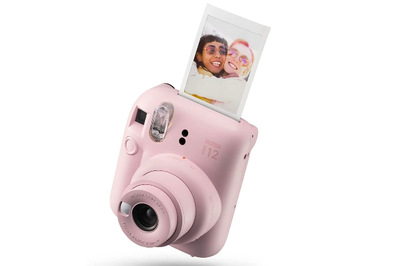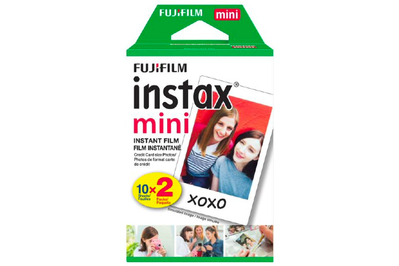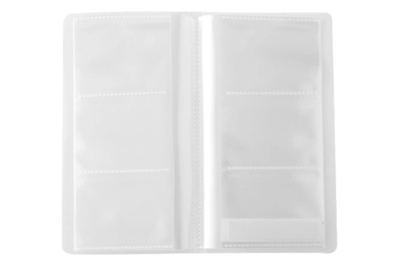
I’ve come to think of my desire for endless, exceptional digital documentation of my existence as a hoarder’s impulse, one far too easy to indulge. It’s not a response to a need, but to unease: I want to stop the passage of time. But—big surprise—it’s not working, and the more pictures I take on my phone, the more I wonder if I’m saving time or wasting it.

An instant camera is my fix. It feeds my impulse to save the past but in a more measured and deliberate way. There’s something special and even celebratory about taking out my Fuji Instax Mini, the modern incarnation of a classic Polaroid, shooting a picture of friends or family, then gathering around to see what we’ve got.
Budget pick
The thrill is in the buffer time, the gamble of a single shot. I love holding a fresh picture in my hand, watching as the black rectangle comes to life and the past develops into the present. It feels like a seam between then and now, a place where you see time at work.
Then the picture is a tangible thing to pass around, to give away, to decorate, or to display. Sometimes, I write on it with Sharpie or cover it in stickers or put a label on the back, and, often after a stint on the fridge, I store it in a Muji Polypropylene Card Holder, which is the perfect size for Instax Mini prints.

Guests seem drawn to the album, picking it up off my coffee table and casually flipping through. It reminds me of my experience with old family albums. It’s certainly more transportive (and less aggressive) than the alternative: an interminable thumb-scroll tour through every detail of an event on my tiny phone screen.
I’ve owned my Fujifilm Instax Mini 8, an older version of Wirecutter’s budget pick, for seven years. The camera itself is cute and toylike, and its photos have a dreamy, nostalgia-inducing soft focus.

The camera body is also surprisingly affordable for the quality of the prints and how long it has held up. You can usually buy one new for less than $80 and sometimes for far less on a thriving used market (perhaps due to their popularity on guest tables at weddings). With a little deal hunting, you can score film for as little as 60¢ a shot, compared with $1 for the Instax Square and $2 for the Polaroid Now (a more finicky camera that ends up wasting film due to underexposed or overexposed shots).
Still, an instant camera isn’t necessarily for everyone, nor is it a great replacement for digital or phone cameras. Like a record player in the modern age, it’s more of a novelty item than your go-to. I think this makes it an especially good gift—it’s a little frivolous and a little fun, something you might not buy for yourself. I got mine as a gift for being in a wedding party.
Instant photos also fade over time (especially if left in the sun), and the film doesn’t travel well by air (it can get ruined in baggage scanners). For these flaws, Instax offers remedies. Instax’s free, well-designed digital app Instax Up (for Android and iOS) allows you to preserve printed photos by digitally scanning them with your phone camera.

If carrying around an instant camera seems cumbersome, but you still want quick, physical prints, Fujifilm also sells the Instax Mini Link 2 , a pencil-case-size printer that lets you print digital pics from your phone. The printer has its place (one Wirecutter staffer loves it), but I just can’t seem to duplicate that soft, washed-out charm of the Instax Mini’s bold flash on a digital print. What’s more, the printer leads me back to the digital space I want to avoid.
The Instax Mini’s strong suit is the charm of its soft focus and its complete lack of photo settings, so you’re mercifully off the hook from trying to orchestrate the perfect shot. It’s a feeling of freedom I never get with my phone camera, which has endless options, filters, and edit tools, or from my phone in general, to which I’m so attached that I’ve begun to feel like a cyborg with a needy extra limb.

“You have a new memory!” my iPhone keeps reminding me. I took the photo yesterday. My old albums and my Instax pictures are less insistent, less sure I will forget them. Every print has the gravitas of a moment deemed worthy of a shot, because when you have to change the cartridge every 10 pictures, you think before you click.
When I pick up my phone, even just to take a picture, it’s less of a thought than an impulse. I get a jolt of unsustainable pleasure, then a sneaking unease. On my quest for the perfect image—of my meal, of myself—picture-taking ends up being less about capturing the moment than obsessively curating it, and, in the process, I lose the moment itself.
When I pick up my Instax, stress falls away. I don’t expect perfection or a complete record of my day. I don’t feel fear and I don’t feel anxiety. I enter an entirely different experience of picture-taking, one of uncomplicated joy. I’m thrilled with almost any outcome: too much ceiling; a face half out of the frame; my eyes closed, a captured blink that speaks to the singularity of the moment and the singularity of the shot. At the risk of cliché: That’s life, really. No take-backsies.
This article was edited by Alexander Aciman and Hannah Rimm.






